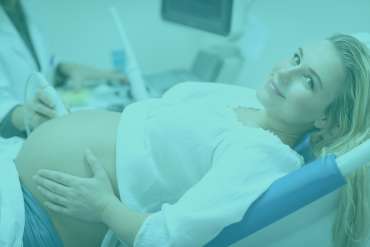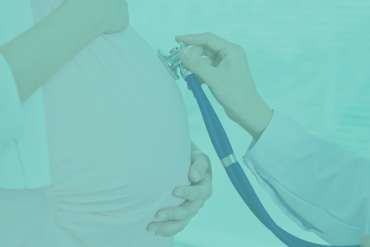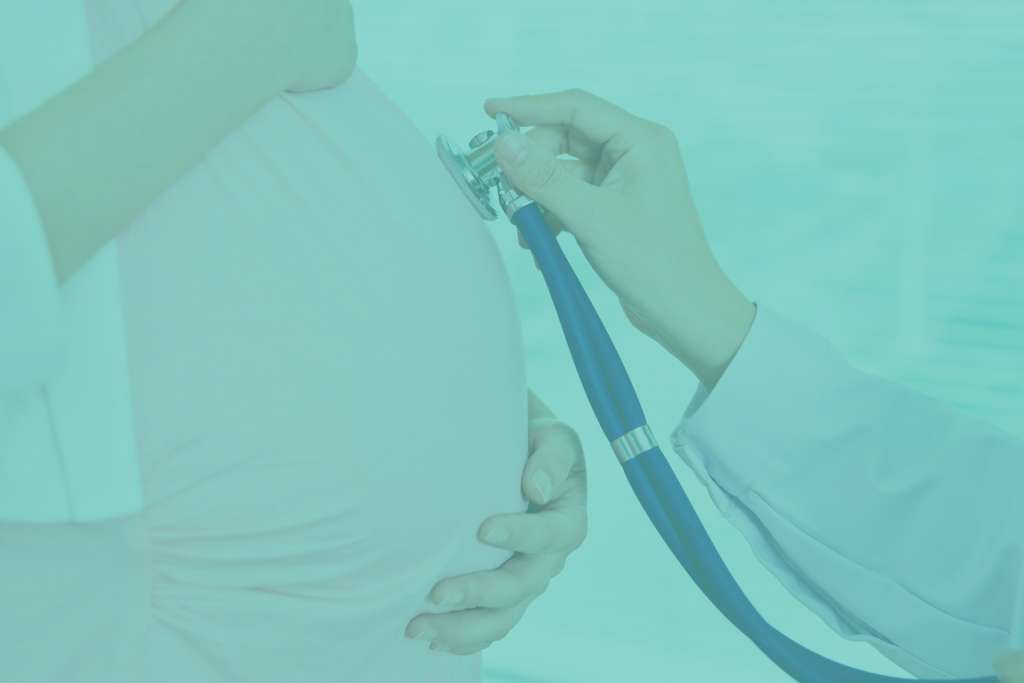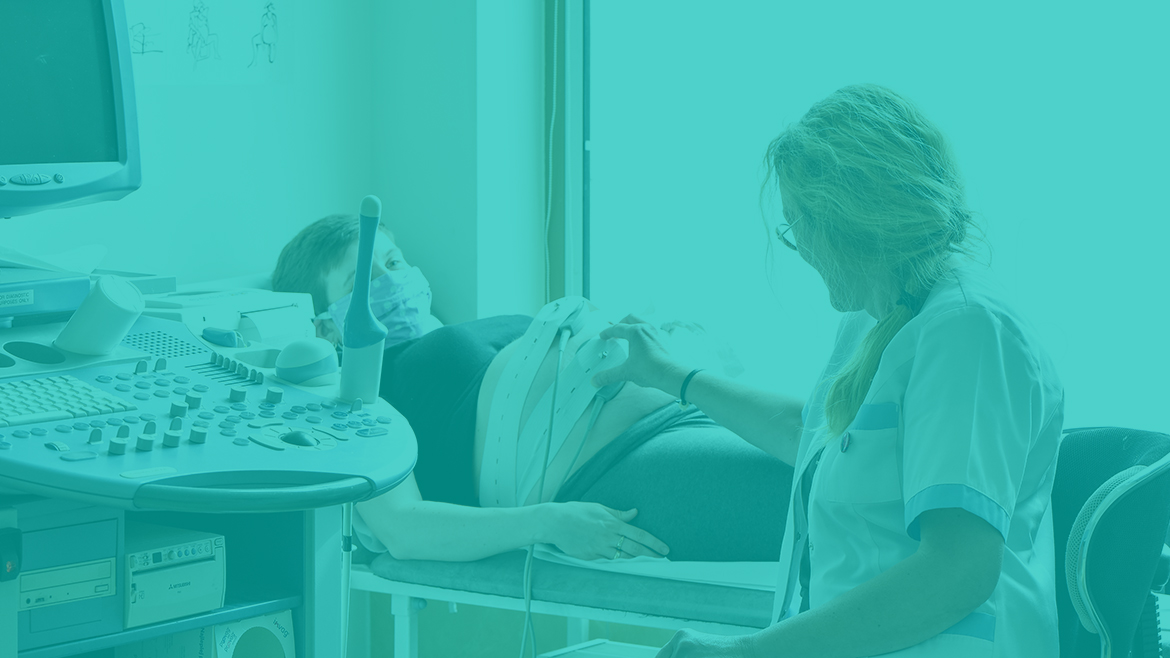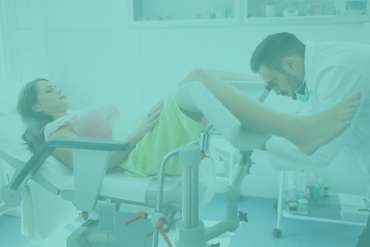Obstetrics
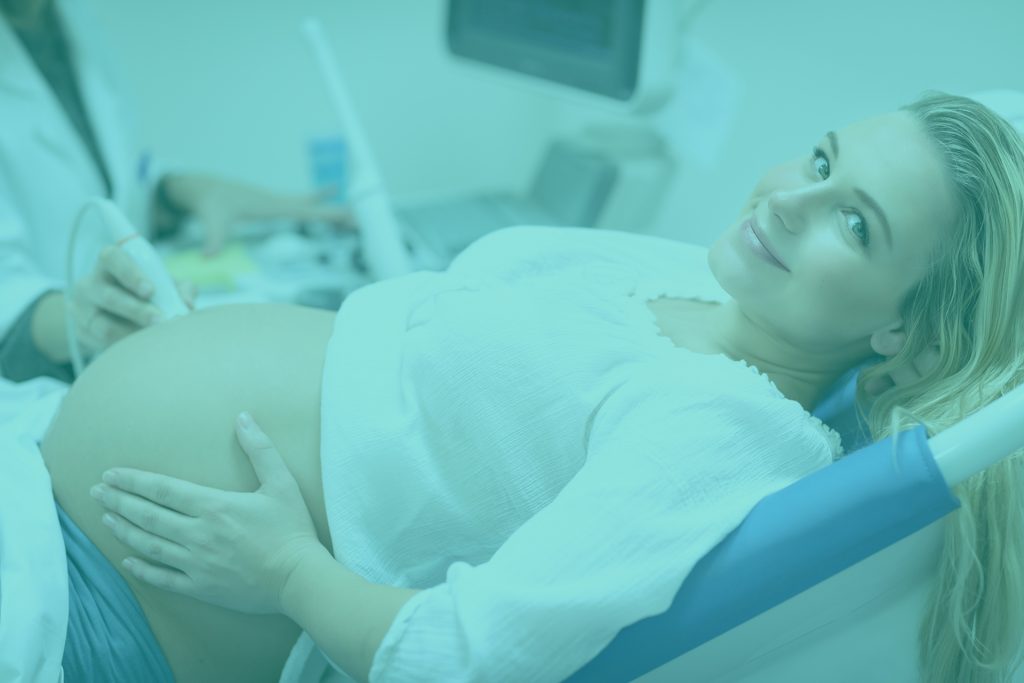
Ultrasound examination during pregnancy up to 10 weeks.
Ultrasound examination during pregnancy up to 10 weeks with a high resolution 3D/4D camera with description and exact calculation of the date of delivery.
The first visit to a pregnant gynaecologist should take place between 6 and 8 weeks. The doctor carries out a detailed interview and basic gynaecological and obstetric examination. During this visit the actual size of the pregnancy is determined and the date of birth from the last period is calculated and compared with the length of the embryo (USG). The fetus’ heartbeat, the so-called FHR, is also assessed. The doctor will also discuss the question of the required vitamin supplementation and the scope and forms of permitted physical activity. The gynaecologist then directs the patient to the midwife in order to establish the pregnancy card and determine what tests she should perform. The tests are ordered in accordance with the currently binding Standard of Peripheral Care.
Maternity visit during pregnancy
A normal, uncomplicated pregnancy requires about 10-12 visits every 4 weeks in early pregnancy, and every 3 weeks in the third trimester, in the last month even weekly, combined with a cardiotocographic record (fetal heart rate and uterine systolic function examination or flow Doppler ultrasound). More or less this is it: 5-6 weeks of pregnancy, 9 weeks, 12 weeks, 16 weeks, 20-22 weeks, 25-26 weeks, 30 weeks, 33 weeks, 36 weeks, 38 weeks, 39 weeks, 40 weeks
Before the visit, the patient goes to the midwife’s office, where she is weighed and her blood pressure is measured. The measurements together with the results of laboratory tests brought by the patient are recorded in the pregnancy card.
Then the gynaecologist-obstetrician is consulted. Each time the quantity and quality of vaginal discharge, its pH and the condition of the cervix are assessed. Depending on the situation, additional diagnostics is implemented – cytological smear, cervical canal culture.
During a follow-up obstetric visit, the presence of a normal fetal heart rate is always confirmed – usually by means of an ultrasound or a special fetal heart rate monitor.
During each maternity visit, a partner can accompany the future mother.
All kinds of certificates (e.g. for an employer with information about pregnancy) are issued at the patient’s request. If the patient’s state of health prevents her from doing her job, a L4 medical certificate is issued.
Test PAPP-A
The ultrasound and trimester can be extended to include the PAPP-A test, a non-invasive prenatal test. It consists in biochemical analysis of patient’s blood for the level of PAPP-A and free beta hCG.
The combination of biochemistry (PAPP-A test) and prenatal ultrasound allows for greater detection of chromosome aberrations, including Down’s syndrome, in the fetus.
In the case of the PAPP-A test, it is very important to perform it on specialist equipment compatible with the Fetal Medicine Foundation software, thanks to which the level of reliability of results is sufficiently high. In our office we work in the above mentioned program.
SANCO prenatal genetic test
The SANCO test is the only non-invasive, genetic prenatal test performed entirely in Poland. It determines the risk of chromosome trisomy of 21, 18 and 13 fetuses (Down’s, Edwards’ and Patau’s syndromes), as well as several other congenital defect syndromes.
The indication to perform the test is any suspicion of fetal genetic abnormalities resulting from, among others, pregnancy over 35 years of age, abnormal ultrasound results or in vitro fertilization.
The test requires only a small sample of future mother’s blood, whose plasma contains the child’s genetic material (so-called extracellular, fetal DNA, cffDNA). The detection rate of the test exceeds 99%.
Thanks to the high sensitivity and accuracy of the test, it allows to reduce the number of women for whom invasive testing is necessary six times.
DLACZEGO SANCO?
There are currently many possibilities for prenatal tests. However, compared to non-invasive prenatal genetic testing such as SANCO, traditional screening methods have a low sensitivity and a high percentage of false positives. Invasive methods such as amniocentesis or trophoblast biopsy (CVS) are reliable but carry a 0.5-2% risk of miscarriage.
Sanco Test RHD
It is made from the mother’s blood to assess the fetus’ RhD factor during pregnancy. This test is useful when qualifying a pregnant woman for intrapregnancy serological conflict prevention:
- in case of complications
- treatments
- pregnant
In order to perform the test, a small amount of future mother’s blood is needed, whose plasma contains the child’s genetic material. Based on DNA analysis, the fetus is checked for RhD. The detection rate is over 99.5%. The test can be carried out between 12 and 24 weeks of pregnancy.
KTG – fetal heart record
The KTG examination, i.e. cardiotocography, consists in monitoring the fetus’ heart function and uterine muscle contraction. This examination allows us to detect possible abnormalities in the fetus’s development related to heartbeat disorders. KTG is performed in advanced pregnancy and during labour.
During the examination, two sensor belts are placed on the woman’s abdomen, which are connected to the monitor. The first belt measures the fetus’ heartbeat and the second one records the uterine contractions. The examination usually takes about 30 minutes, but in some cases it can take up to an hour.
NACE – Non-invasive prenatal test
NACE is a modern, non-invasive prenatal test. Using it we are able to diagnose most of the chromosomal abnormalities most commonly found in children (e.g. Down’s, Edwards’ and Patau’s syndrome, abnormal amount of sex chromosomes). It consists of taking a small amount of blood from the mother, from which free fetal DNA (so-called cffDNA) is isolated.
This test is completely safe for the mother and foetus. The test was developed by the American company Illumina, Inc. It is not only safe, but also extremely effective in diagnosing abnormalities resulting from excess or shortage of chromosomes.
The NACE test is available in 2 versions:
- NACE Standard (Down, Edwards and Patau syndrome, fetal sex and sex chromosome changes – Turner and Klinefelter syndrome)
- NACE Extended 24 (NACE Standard + additional 6 microdelegations: 22q11.2 (DiGeorge syndrome), 1p36, 15q11.2 (Angelman syndrome), 15q11.2 (Prader-Willi syndrome), 5p- (Cri du chat syndrome), 4p- (Wolf-Hirschhorn syndrome) and all chromosomes analysis

